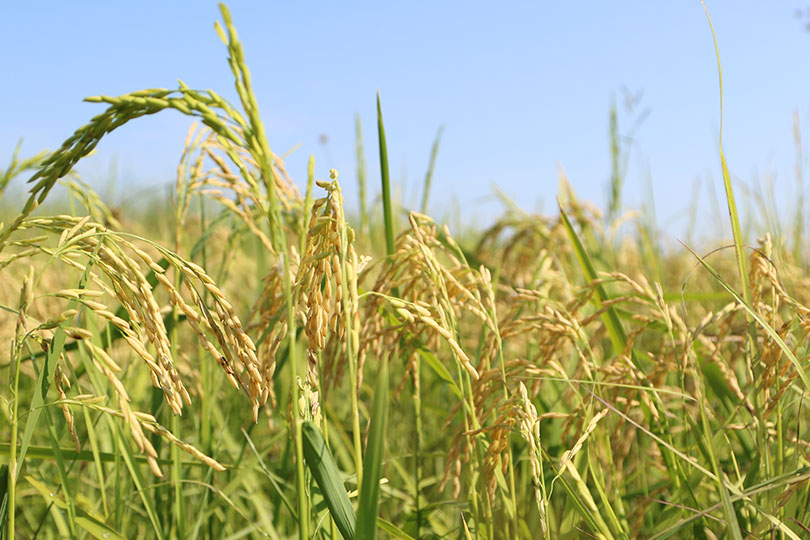By Jennifer Dorsett
Field Editor
Although U.S. rice farmers are still waiting for China to begin importing their product, the overall mood is cautiously optimistic.
China pledged to begin buying U.S. rice in January, after the countries signed the U.S.-China Economic and Trade Agreement.
China has followed through with most of its “phase one” agreements so far, fueling speculation that China, a long-coveted market, will finally become a buyer of U.S. rice for the first time.
In a demonstration of good faith, China has lifted restrictions on U.S. beef and pork, removed bans on U.S. barley, blueberries and avocados and increased purchases of soybeans, corn and wheat.
Earlier this month, Chinese importers committed to buy more than 200,000 metric tons (mt) of U.S. corn and 126,000 mt of U.S. soybeans for delivery in the 2020-21 marketing year.
U.S. Department of Agriculture’s (USDA) Foreign Agricultural Service (FAS) export sales data from the week of June 26 through July 2 indicate China purchased 66,474 mt of corn and 74,367 mt of soybeans during that time period.
China has not made any rice purchases this marketing year, but that may soon change, according to Peter Bachmann, vice president of International Trade Policy for USA Rice Federation.
“In the phase one agreement, they committed to purchasing U.S. rice,” Bachmann told Agri-Pulse. “They didn’t say whether that was going to be through state trading enterprises or private importers, but we assume and hope that it will be a mix of both at some point. We want to make sure they follow through on that commitment.”
Just how much rice China committed to buying under the phase one agreement has not been made public, but China did register 32 U.S. rice facilities as approved for exports.
Now, U.S. rice farmers are awaiting confirmation that China pulled its subsidies for domestic rice farmers, a move that is expected to curb unfair Chinese competition from the international and even domestic markets in the U.S.
China promised subsidy program reforms to the World Trade Organization (WTO), as well as the U.S., but it is unclear if anything has changed yet.
Officials presented reforms to setting floor prices for domestic producers to a WTO dispute panel on June 29. The U.S. has 20 days to verify China’s claims.
“It’s distorting the world market when they’re shipping rice so cheaply,” Bachmann said. “They’re only exporting about 3 million metric tons right now, but it’s coming into the U.S. through Puerto Rico. There’s roughly 65,000 tons of milled medium grain rice coming in every year from China at much lower than market prices because of their subsidies.”
U.S. rice farmers are also watching to see if China follows through with its promise to transform the nation’s tariff rate quota (TRQ) process.
In 2001, as part of their deal to join the WTO, China pledged to buy big quantities of foreign rice using TRQs, but the country has continually manipulated that process.
The WTO has said China has until October to change the way it runs its rice TRQ, which currently allows big government-owned companies to hoard quota allocations.
“If they don’t reallocate and let the private guys bring in rice, then there’s very little opportunity,” Bachmann said. “That’s how (China) has gotten around bringing in rice from a variety of origins they don’t want to do business with.”
Chinese farmers grow nearly 30 percent of the world’s rice crop, but China is still the top global importer and consumer of rice. The U.S. Trade Representative’s Office estimated China will import 4 million mt of rice over the 2019-2020 marketing year.
That leaves room for U.S. rice, where the primary route of entry is expected to be high-end restaurants and hotels, according to a report by the USDA FAS office in China.
The primary channel for selling U.S. rice “is initially expected to be through medium- to high-end restaurants, especially Japanese style restaurants and niche grocery retailers looking to capitalize on the cachet of U.S. rice,” the report said. “Pending a favorable consumer response, U.S. rice could expand its presence into more mainstream retail and online platforms. Imports of U.S. rice are expected to come packaged for both retail and HRI [hotel, restaurant, and institutional] use.”
Last year, in what was considered a promising gesture, a private Chinese importer pledged to buy U.S. rice for the first time, but the sale was never completed.
It’s been nearly seven months since the U.S. and China signed the phase one deal, but there’s still no rice trade and that won’t likely happen without clearance from government officials in Beijing.
“We could sell at any point,” Bachmann said. “It’s really a matter of when the government makes the first purchase. They’ve got to take the first step before private importers are going to import rice. They’re probably waiting for our new crop rice to be available. They want to see what pricing looks like this fall and hoping prices come down from where they are right now.”

